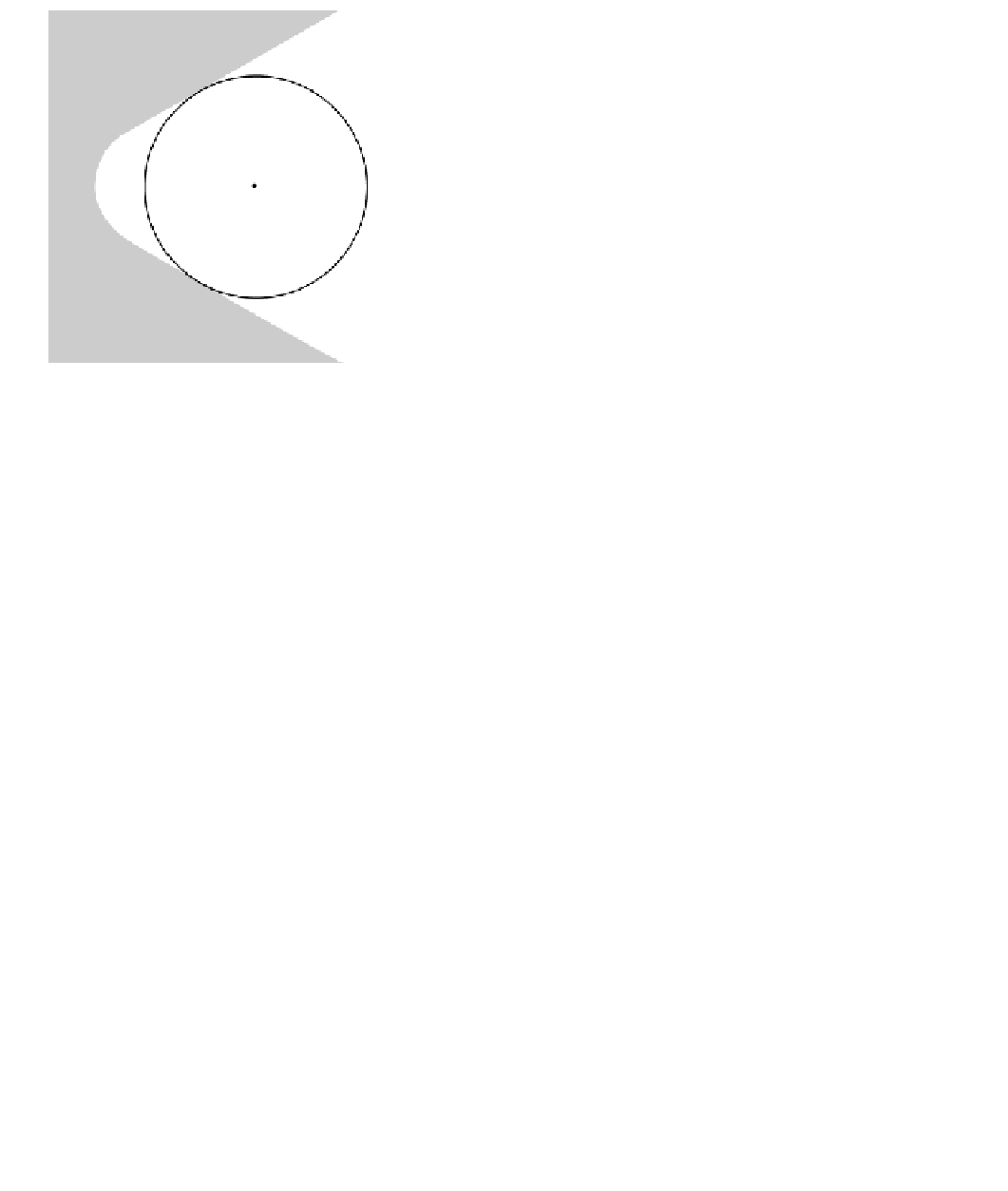Geoscience Reference
In-Depth Information
strength with higher values of normal stress. It might be
expected that increasing confining pressure will continue the
linear behavior, but for high values of confining pressure the
Coulomb tendency does not explain fracture behavior.
criterion does not apply, as the expected increase of critical
shear stress to produce fractures is not observed. Thus,
the fracture envelope bends with higher confining pres-
sures and eventually parallels to the
n
-axis (Fig. 4.90).
Consequently the Mohr circles intercept the envelope in
positions which define higher fracture angles with respect
to the principal stress
4.14.9 Fractures in compressive tests at high confining
pressures: The von Mises criterion
1
, from the classical
30
(2
120
) of the Coulomb field finally to
45
(2
), which are the surfaces of maximum shear
stress. Ductile shear fractures or simply ductile deforma-
tion (barreling) will form in these settings. This pair of
straight lines, in which the value of the critical shear stress is
constant for different values of normal stress and is
independent of the confining pressure, form the
von Mises
fracture envelope
. The von Mises ductile failure criterion can
be expressed as,
90
Increasing confining pressure defines a transitional ductile
field and eventually a ductile field in which the Coulomb
MPa
t
constant. This value of critical shear
stress is the yield stress, which defines the boundary for the
ductile field of deformation (see Section 3.15).
All envelopes can be put together defining the critical
state of stress and the fields of stress stability and instabil-
ity in all possible settings, from tensile to compressive with
high confining pressure conditions. Nonetheless, as seen
in rheology (Section 3.15), some other factors are
important in rock behavior, such as temperature and con-
fining pressures which both increase with depth, lowering
the yield stress and allowing ductile deformation, or fluid
pressure in interstitial pores (Fig. 4.90). As seen previously
(Section 3.15) the effect of pore fluid pressure in fracture
formation is very important as the Mohr circles are
displaced toward the left by reducing the effective stress
0
t
c
2
u
= 120°
t
o
s
n
s
1
s
3
MPa
t
o
t
c
Fig. 4.89
A combined envelope for tensile, transitional, and
compressive fields. The tangent points give the orientation of the
conjugate shear planes at which fracture can possibly form.
t
s
y
BDT
von Mises Failure Envelope
Yield stress
2
u
= 90°
T
0
s
n
T-TF
s
y
von Mises Failure Envelope
BDT
Fig. 4.90
The von Mises failure envelope for high confining pressures in relation to the other envelopes (CFE: Coulomb fracture criterion;
T-TF: transitional tensile envelope;
T
0
: Tensile strength). The curved stretch between the Coulomb and the von Mises failure envelopes
is the brittle-ductile transition (B-DT). In the von Mises field ductile failure occurs with fracture angles of 45
(2
90
).


























































Search WWH ::

Custom Search